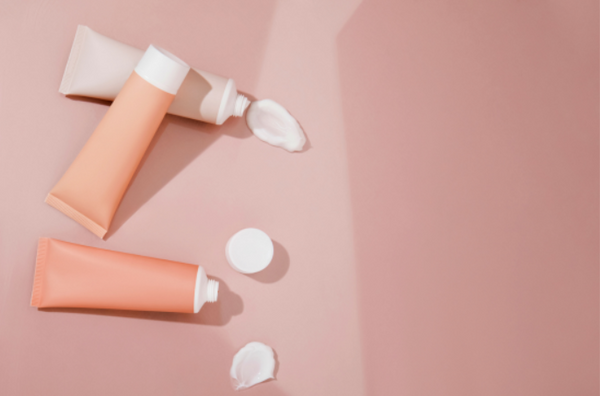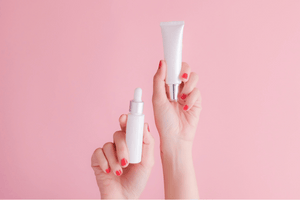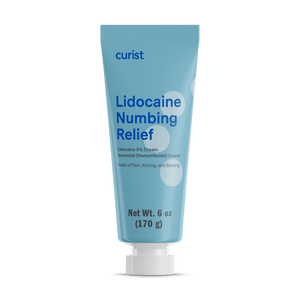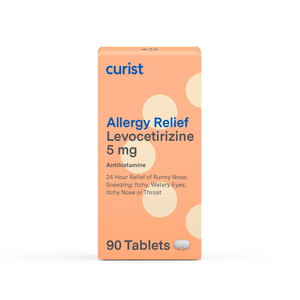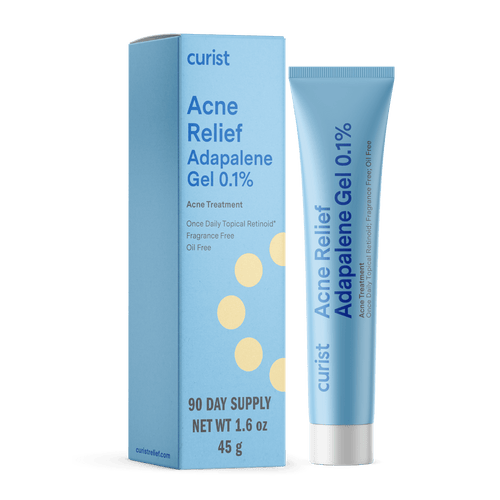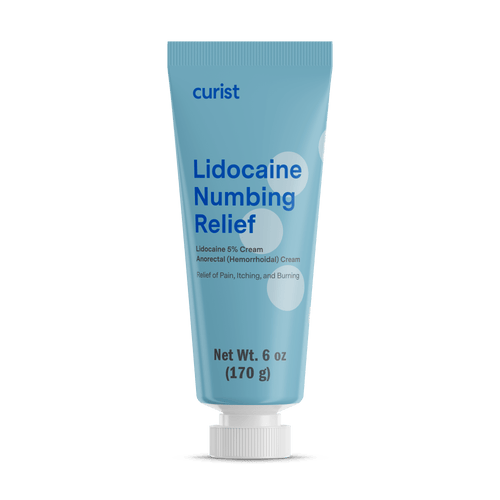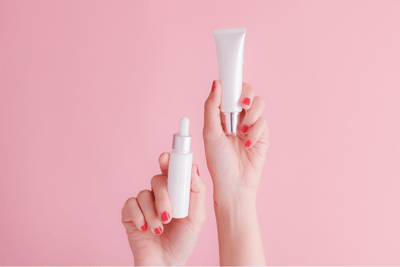By Cindy Diep, The University of Texas at Austin College of Pharmacy
Curist delivers over-the-counter medicines to your door at a fraction of the price of traditional brands. We hope everyone stays safe and healthy during this time.
Have you ever wondered about the difference between adapalene and clindamycin to treat acne? You’re in luck because Curist is here to break it down for you!
Are Adapalene and Clindamycin the Same Thing?
Adapalene and clindamycin are not the same thing, but they are both topical and can be used to treat acne. They fall under different drug classes and have different mechanisms of action. Adapalene is a retinol compound, while clindamycin is a lincosamide antibiotic, which is used to treat certain bacterial infections.
What are the Differences Between Clindamycin vs Adapalene?
Adapalene, the main ingredient in Curist Acne Relief, is a topical retinol, which means that it is a Vitamin A derivative. It works by stopping pimples from forming under the surface of the skin and promotes skin cell turnover. Adapalene is indicated as monotherapy for mild comedonal acne (bumps caused by blocked pores, such as whiteheads and blackheads), in combination with other topical agents for the treatment of moderate to severe acne, and as maintenance therapy.
In contrast, clindamycin is a lincosamide antibiotic that works by inhibiting the growth of bacteria on the skin, particularly P. acne, which is bacteria associated with acne. According to the American Academy of Family Physicians, clindamycin is not recommended to be used as monotherapy or maintenance therapy, as this could increase the risk of resistance. The duration of use should also be limited to 12 weeks.
Is Adapalene More Effective than Clindamycin? Is Clindamycin Better than Adapalene?
The effectiveness of these medications can vary from person to person, depending on the specific characteristics of an individual’s acne, skin type, and how well they tolerate each medication. First-line therapies for acne vulgaris include a topical retinoid (e.g. adapalene), or a combination of medications consisting of benzoyl peroxide and an antibiotic (erythromycin or clindamycin). Clindamycin should not be used as monotherapy, due to the risk of developing bacterial resistance, and should be combined with benzoyl peroxide. In contrast, adapalene can be used alone primarily for comedonal acne and if you have mixed or inflammatory acne. It can also be used in conjunction with a topical or oral antimicrobial, such as erythromycin.
Is Adapalene Stronger than Clindamycin? What is Stronger than Clindamycin?
The potency of these medications can be subjective and depends on various factors, such as an individual’s skin type, the severity of their acne, and how well they tolerate the medications. When comparing the strength of adapalene and clindamycin, it’s important to note that they have different mechanisms of actions, so it is difficult to say which medication is stronger. If you are considering using adapalene, clindamycin, or a combination of both, it is recommended to consult with a dermatologist to see what will work best for you.
What’s Best for Acne: Adapalene or Clindamycin?
The best product for acne depends on the individual and it is recommended to consult with a doctor to help you pick the product that best suits your needs. According to the American Academy of Family Physicians, it may be best to initiate treatment with adapalene for patients with comedonal acne. For patients with mild inflammatory acne, they can be started on a regimen of an antibacterial agent, such as clindamycin. For patients with more moderate or severe inflammatory acne, an anti-comedonal agent and an antibacterial agent could be used. A number of factors need to be considered to choose a treatment regimen, so speak to a doctor to see what is best for you.
Can I Use Adapalene and Clindamycin Together? Can I Use Clindamycin and Adapalene on the Same Day?
Adequate clinical studies are lacking, so it is difficult to determine the effectiveness of combining adapalene and clindamycin therapies. In theory, adapalene and clindamycin can be used together in the treatment of acne, as they have complementary mechanisms of action that address different aspects of acne formation. It is possible that this combination can be more effective than using either medication alone. In patients with comedones (bumps on the skin caused by blocked pores that are not inflamed) and inflammatory lesions, a comedolytic agent such as adapalene, may be combined with a topical antibiotic such as clindamycin. However, it is important to be aware that using both of these medications together can cause mild adverse effects, such as skin irritation. Consult a doctor to see if a combination therapy of adapalene and clindamycin might be right for you.
Can I Use Clindamycin and Adapalene Alternatively?
Yes, it is possible to use adapalene and clindamycin on alternating days. Using these medications on alternate days can be a strategy to minimize the risk of irritation while still benefiting from the different mechanisms of action of each medication. However, the specific regimen and frequency of use should be determined based on the severity of your acne, skin type, and other factors determined by your dermatologist. Communicate with your dermatologist to receive specific instructions on how to incorporate these medications into your skincare routine.
